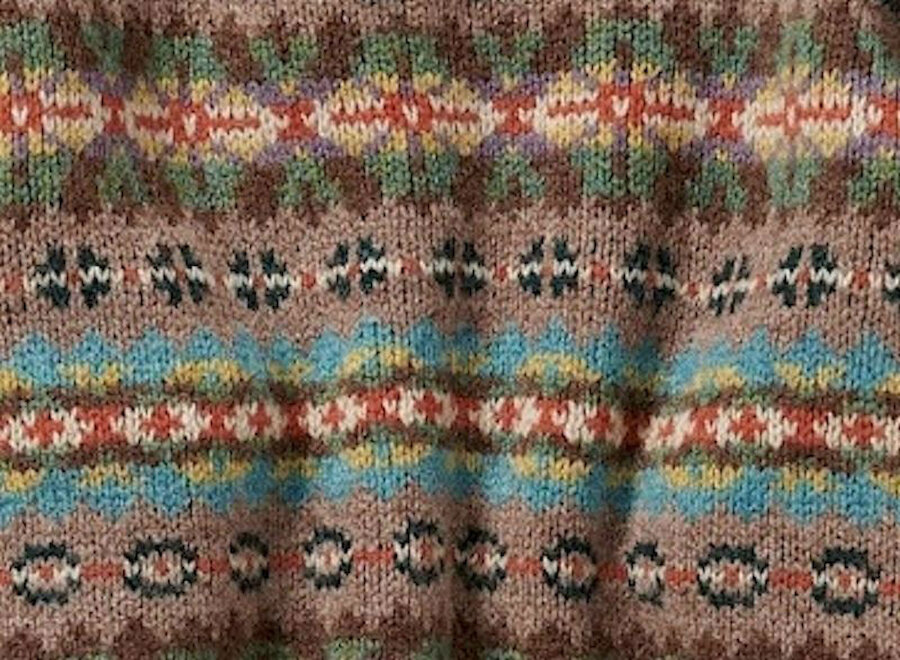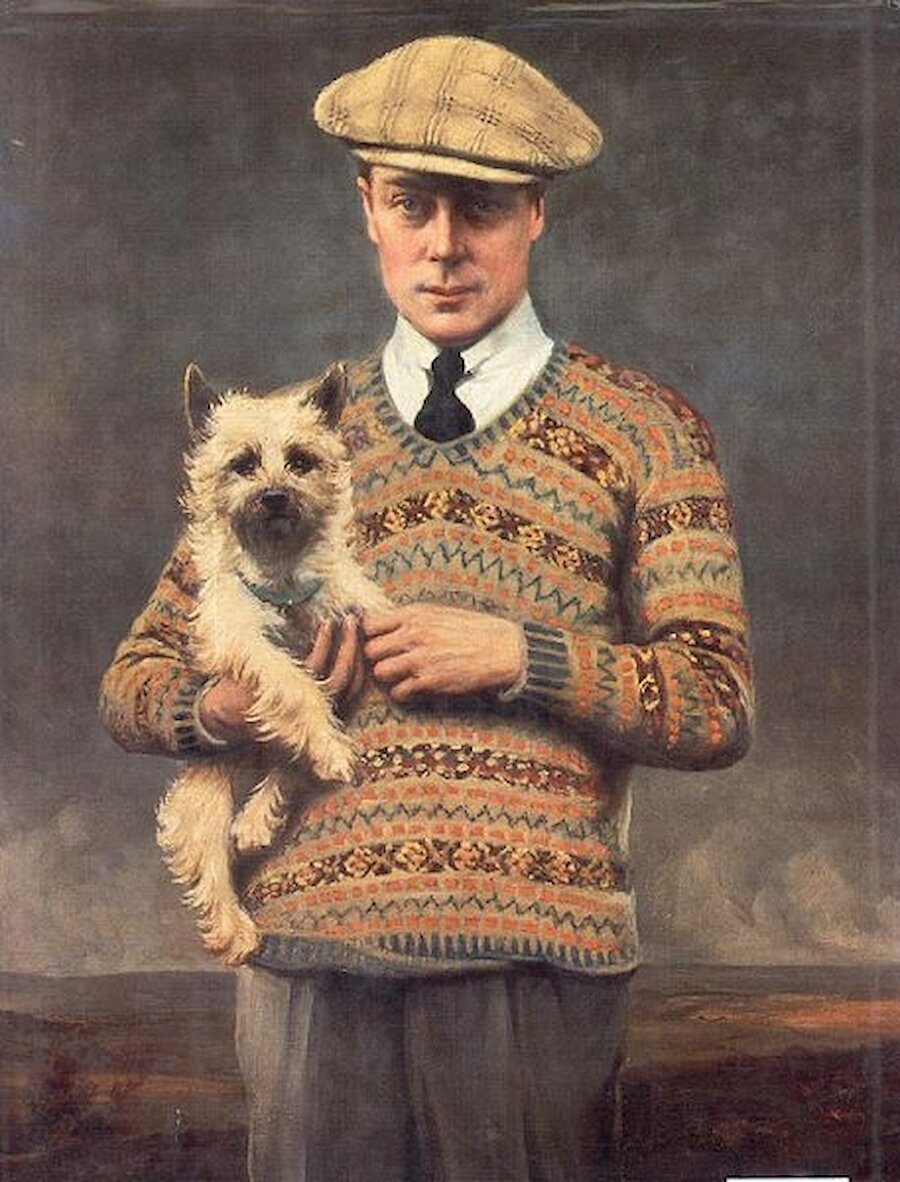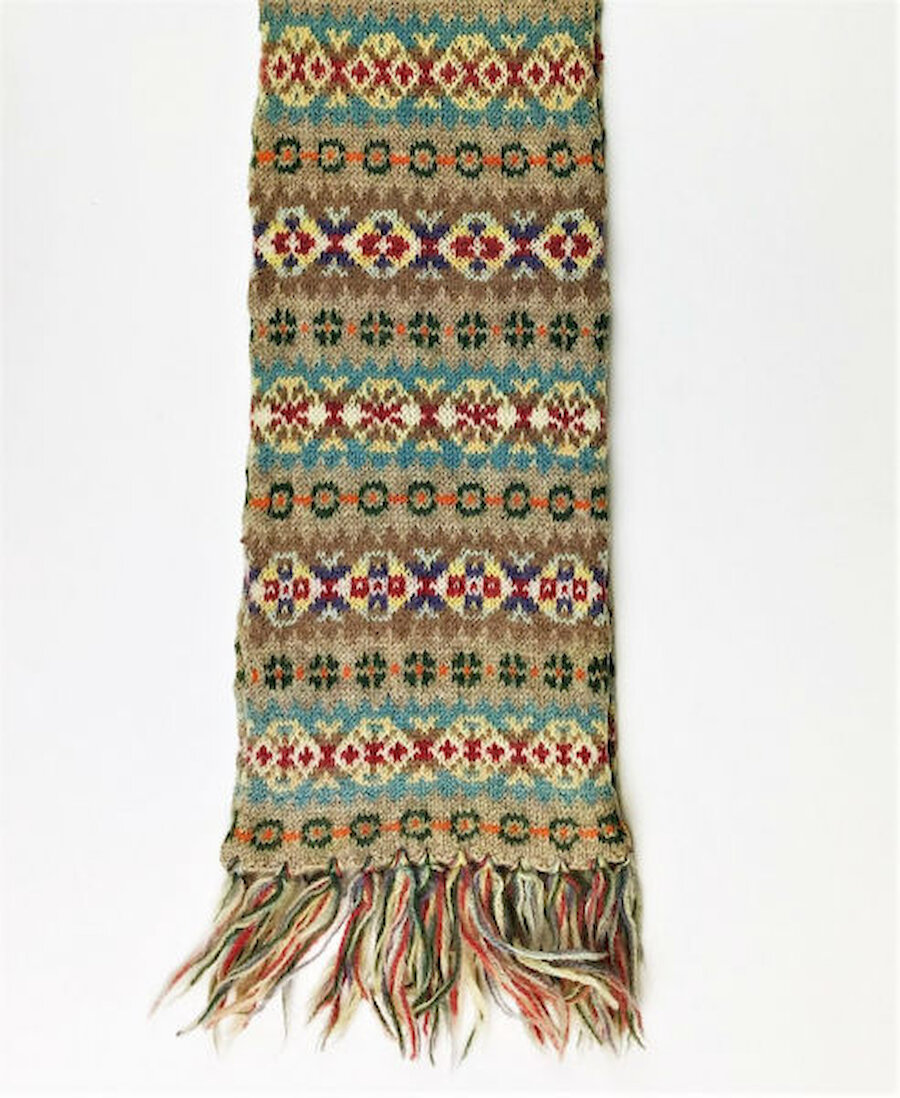There are some things that are inextricably linked with Shetland, including especially ponies, the islands’ fiddle playing and knitwear.
There’s no question that knitwear has carried the names of Shetland and of course Fair Isle around the world. The islands’ position in textile heritage, celebrated in an annual Shetland Wool Week, is secure. Shetland knitwear has been worn by celebrities ranging from the then Prince of Wales (in the early 1920s) to Paul and Linda McCartney. Earlier this year, I wrote about its history.
More recently, it has inspired a number of fashion houses to produce patterns that emulate traditional Fair Isle – not always, it must be said, acknowledging the source.
Three years ago, however, the Oasis clothing chain launched items - including the jumper shown above - that were explicitly based on designs held in the extensive textile collections at the Shetland Museum and Archives, even if they didn’t use the traditional colour schemes. Oasis had sought expert advice from one of the curators at the museum, Dr Carol Christiansen.
Now, another leading clothing company, Toast, has found inspiration in the museum’s collection; they, too, sought Dr Christiansen's advice. They’ve launched a Fair Isle jumper, which is shown above, with a detail at the head of this article. The design is based on a scarf that’s on permanent display.
Dr Christiansen said:
“It’s a wonderful example of how native Shetland wool and historical textiles are still so relevant and how our collections continue to inspire. We were pleased to work with TOAST to bring this design and its historical origins to wider attention.”
The scarf dates from 1933 and the museum’s records indicate that it was bought in Shetland’s south mainland from a woman who had been knitting by a roadside near the Spiggie Hotel, where the purchaser was staying. Thanks to the publicity generated by the Prince of Wales’ endorsement, there was heavy demand for Shetland knitwear in those days, so that kind of sale on sunny summer days was probably not unusual.
The scarf – and the jumper – use a wider range of colours than is often found in Shetland jumpers. Perhaps the scarf knitter was using up wool left over from other work and that wouldn’t have been unusual: the museum has other examples. However, as Dr Christiansen points out:
"Like all Fair Isle design, there was always the use of at least one, but usually two natural colours, no matter how many dyed shades were used. This helped to ground the dyed colours and in this period fawn and moorit, combined with natural white, were the most popular neutrals. The overall colourway, soft dyed colours on a fawn background, was very much in vogue in the early 1930s and is reflected in contemporary Shetland tweed sample colourways, also in the Museum’s collection.”
there was always the use of at least one, but usually two natural colours, no matter how many dyed shades were used
The wool used in the Toast jumper comes from Shetland, too, having been supplied by Jamieson & Smith Shetland Wool Brokers.
There’s an excellent account on the Toast website of how the scarf influenced the jumper design and how the colours were selected from Jamieson and Smith. The article also pays tribute to the skills of the company’s Oliver Henry, built up over a lifetime of selecting and grading Shetland wool.
You can find out more information online about the Shetland Museum’s textile collections, which are recognised as nationally significant; and Dr Carol Christiansen's informative blogs are well worth reading.






